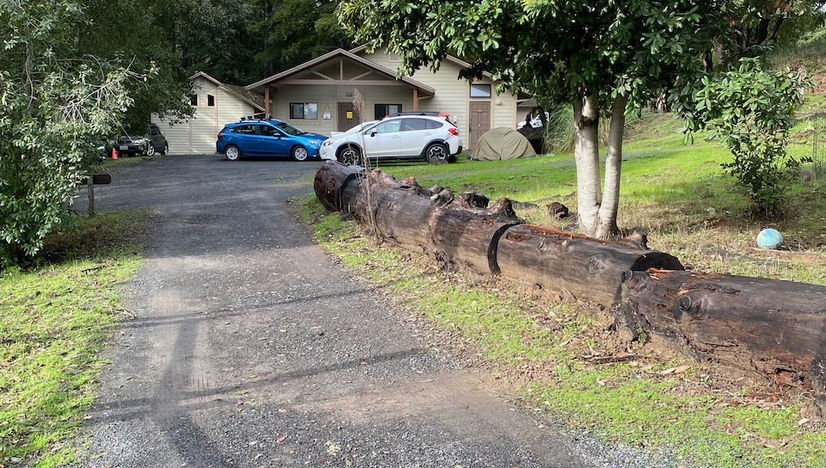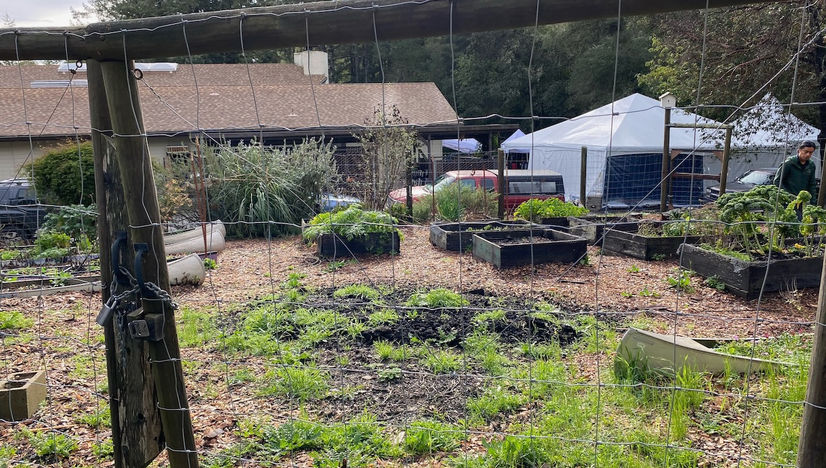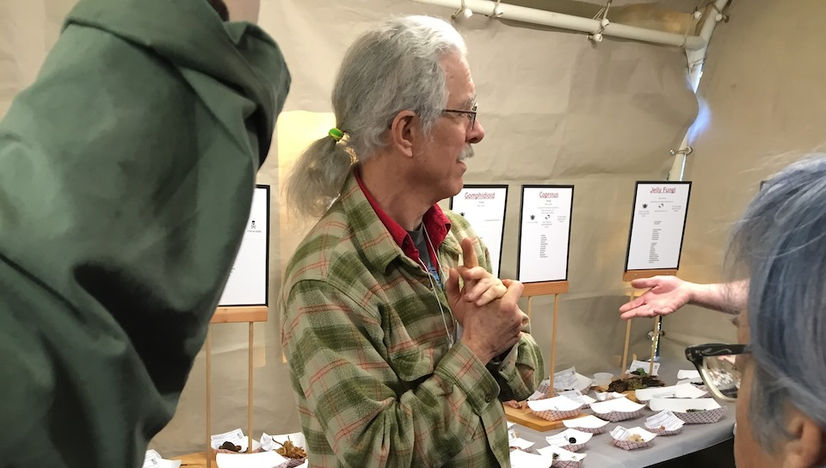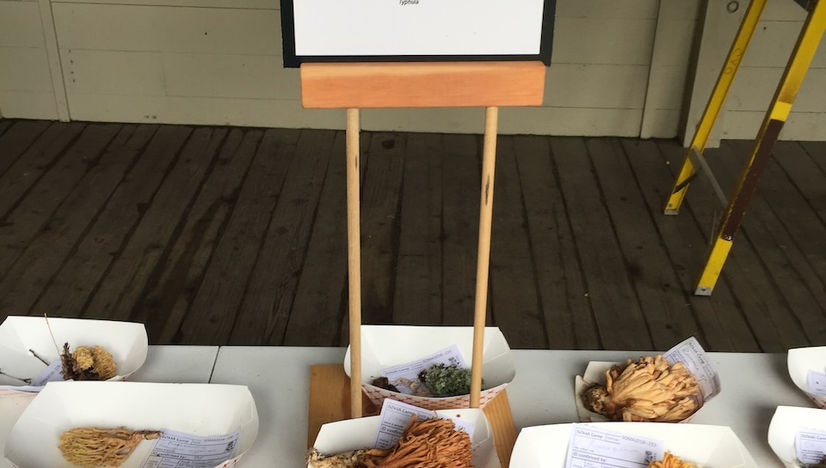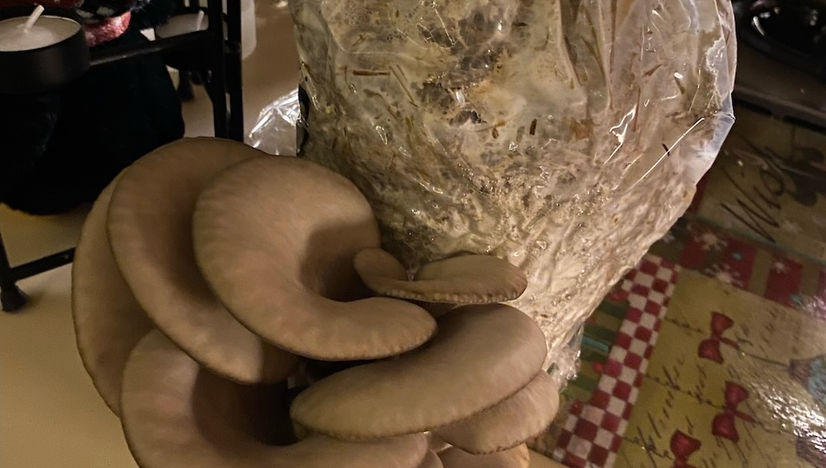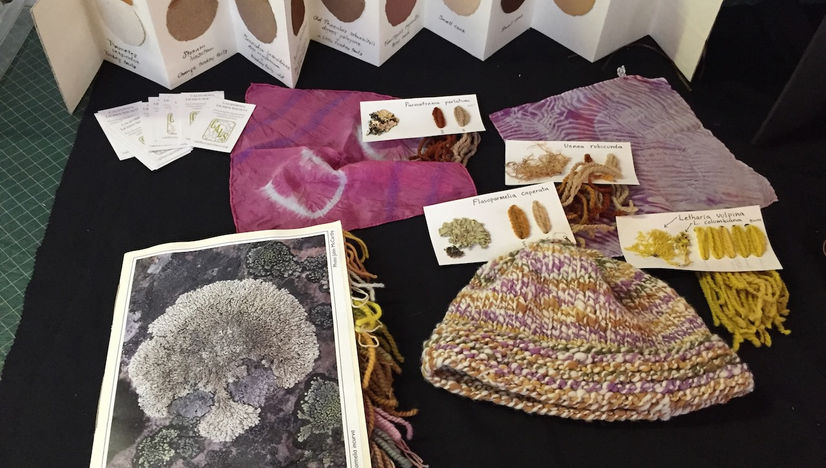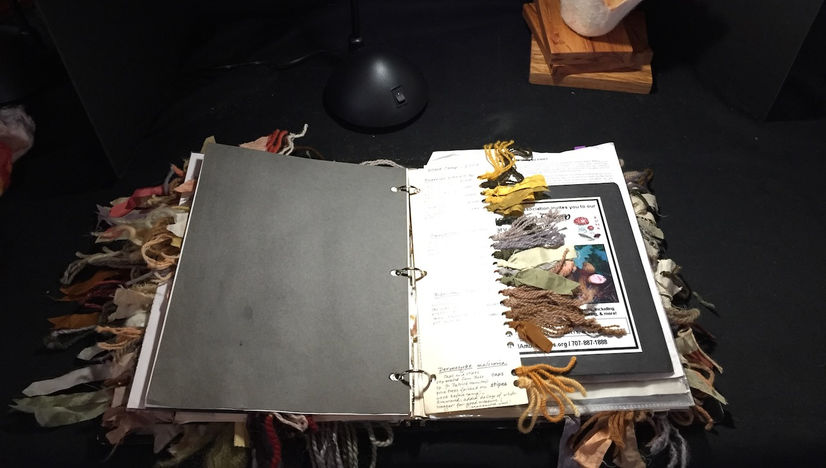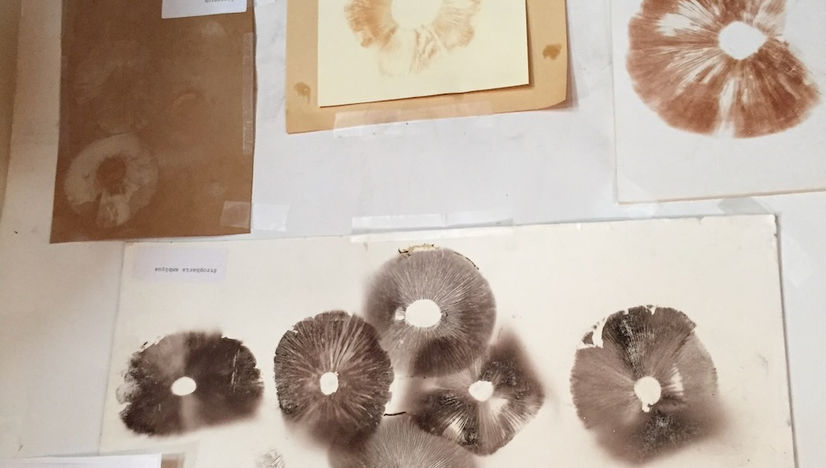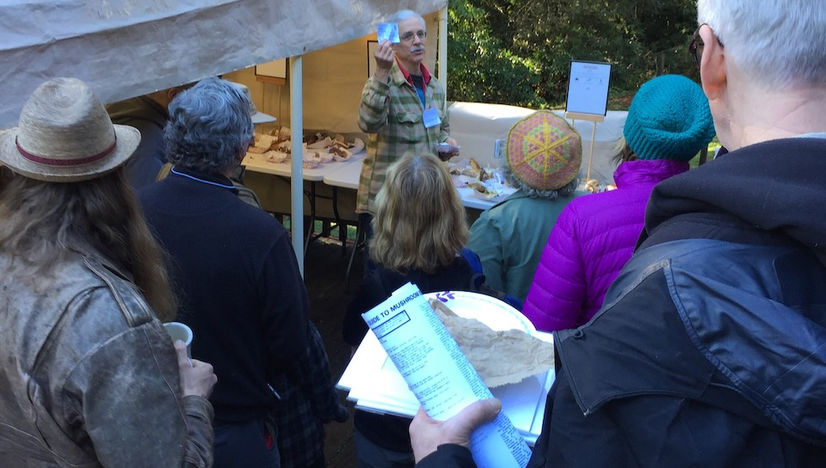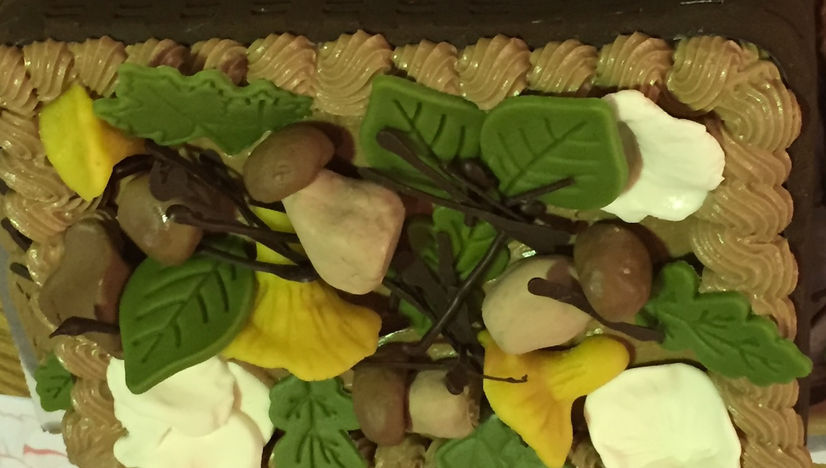For the Love of Mushrooms
(NOTE: Click on graphic below to see the photo gallery.)
For the Love of Mushrooms
At mushroom camp there are forays (mushroom foraging trips) and classes available for 3 whole days, in several tracks: dyeing and crafts, medicinal, culinary, microscopy and mycoremediation. Since it is my field, I attended the medicinal mushroom and mycoremediation classes, and the culinary classes, when there was time.
Mycoremediation is the act of re-establishing soil and water, by removing oil and other toxins from them, using mushrooms. As a fungal organism goes through its life cycle, it consumes dead and decaying material in its path, clearing away debris while creating nutrient-rich soil for trees and other plants. With their decomposition “superpowers”, fungi can also play a crucial role in repairing ecosystems.
I found the mycoremediation classes particularly moving. The speaker was detailing her 4 current projects to remediate fire burned areas in California. A microbiological inoculum (mushroom mycelium*, or the underground, invisible part of the mushroom, as opposed to the visible fruiting body – the mushroom proper) from healthy non-burned soil is introduced into wattles (netted straw rolls put on hillsides to prevent erosion and act as a biological filter for toxins). The inoculum is apparently the only thing that can break down the pyrolyzed (subjected to heat in the absence of oxygen) soil over time.
“Mycoremediation, particularly through the use of native fungi, is one of many tools for community restoration projects aimed at regenerating areas hit hard by human-made hazards, where erosion, decay, disaster, pollution or mismanagement have caused the ecosystems to falter,” according to Carly Nairn. This is the part about saving the planet! For more on mycoremediation click here.
Other fungi can convert wood-chips into compost or biofuel. This helps prevent secondary disasters after a fire, where burning structures can release toxic substances into a watershed.
This year the main topic, at SOMA camp, was medicinal mushrooms, so I felt right at home. The keynote speech, by Christopher Hobbs, PhD, L.Ac. emphasized how healthy mushrooms are for you. This is because of the high level of fiber in them, especially chitin (also found in the exoskeletons of crustaceans and insects) and beta glucans (an immune system activator and cell response modifier especially helpful for chemo- and radiotherapy-induced immunosuppression). Because of the low-fiber processed/animal foods diet many Americans eat, daily fiber intake is about 15 grams, while the optimal level is 25-30 grams. Because of their high fiber and protein content, plus low calorie count, Dr. Hobbs said that “mushrooms are almost the perfect, complete food”.
The other medicinal classes that I found really interesting were on the use of Amanita muscaria extracts in very low doses to treat neurological problems, and as a base for cancer drugs.
Mushroom Bisque is one of my favorite Mushroom Recipes. You can find it HERE. Please enjoy the mushroom bisque and consider incorporating mushrooms into your everyday cooking. They are very versatile and have a host of benefits for your health. I will write more about specific mushrooms and their benefits at a later time.
*Mycelium is a part of a mushroom that is very similar to the root system of any plant. It is a rich network of thin filaments called hyphae that collect food, water, and nutrients to nourish the fungus. It also provides the mushroom with support and anchorage. It has been concluded that as much as 90% of land plants are in a mutually beneficial relationship with mycelial networks. Without fungi - without mycelium - all ecosystems would fail. (according to Paul Stamets).






